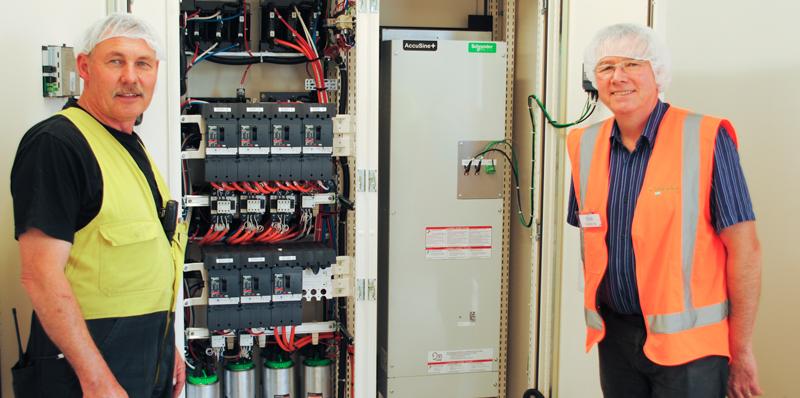By: Stephen Beros, Application Engineer – Engineering and Technical Support, Schneider Electric
The definition of power factor is the ratio of true power to apparent power and it is represented as the cosine of the phase angle between voltage and current in an alternating current circuit. Translated into economic terms, power factor can be loosely defined as the ratio of useful power to the power that is drawn from the supply and represents the electrical efficiency of an installation.
For many decades, power factor correction was achieved by the addition of appropriate capacitance to the load. In the latter half of the twentieth century, connection of capacitors to motor terminals was a common approach and in terms of efficiency worked well. Automatic power factor correction controllers were used to operate capacitor banks at main switchboards to maintain overall site power factor to target.
Today, capacitor based power factor correction systems are still available and in most applications are a perfectly suitable type of system. They are fitted with detuned reactors to counter the effects of harmonic distortion and associated heat dissipation. These reactors also prevent any possibility of electrical resonance occurring in the capacitor circuit. Capacitor switching contactors are fitted with insertion resistors to reduce inrush current to acceptable levels. A capacitor based power factor correction system can be configured to have step sizes that align to the load profile to perform appropriate compensation. Electricity supplier’s measure power factor averaged over half hour intervals and charge accordingly. When a load is relatively steady, there is no need for instantaneous power factor correction nor any advantage to be gained by investing in such technology.
Active power factor correction systems utilise power electronics and digital control to achieve active reactive current compensation for specific and high performance solutions. The Schneider Electric Accusine PFV+ active power factor correction unit utilises closed loop control to correct power factor with a ¼ cycle (5mS) response. This is suitable for unsteady fast changing loads such as cranes, welders, saws and debarking machines. However, sites containing loads such as these generally have a steadier base load. Considering active power factor correction produces a significant amount of heat, the question is whether the whole site needs active power factor correction when only part of the site needs it.
A hybrid power factor correction system is comprised from both capacitor based and active power factor correction. Active power factor correction is used to cope with the unsteady fast changing portion of total load while capacitor banks support correction by correcting the steadier base load. This system offers the high level performance of an active system combined with the cost effectiveness offered by capacitor bank correction.
Oji Fibre Solutions approached Schneider Electric in April 2016 with view to a recommendation of a suitable power factor correction system for its corrugated cardboard packaging facility in Levin. Initially, a traditional system was considered. However, a study of load profiles showed that when load is unstable, there would be up to twenty-six contactor switching events per hour which is not ideal.
Two options of hybrid solutions were modelled against the measured load and theoretically, both were capable of achieving requirements. The more cost effective option was built by Gael Switchboards in Wellington and then installed at the site towards the end of 2016.
Performance graphs
Power Factor has distinctly improved and is consistently above the design target of 0.96 lagging. A further consideration around power factor correction systems is heat dissipation. Active power factor correction units dissipate considerably more heat per kVAr than their capacitor-based counterparts. The hybrid solution installed at Oji will dissipate 4.8 – 5kW of heat at full capacity whereas a totally active power factor correction unit of the same capacity would dissipate up to 11.25kW of heat. The hybrid solution offers the performance of an active solution but at a reduced cost and greatly reduced heat dissipation.
Neil McLean of Oji Fibre Solutions and Stephen Beros from Schneider Electric with the Hybrid Power Factor Correction Unit.
Oji Fibre Solutions (Oji FS) are now running their Corrugator Plant more efficiently and are saving energy as a result of installing the hybrid power factor correction system. A new main switchboard, also built by Gael Switchboards from Schneider Electric components, has been installed in the Corrugator building to ensure the safe and reliable distribution of power throughout the plant.
Oji FS packaging facilities produce a range of paper-based products for the horticulture, dairy, meat, beverage, seafood, reseller and industrial sectors in New Zealand and Australia. They are committed to developing innovative, environmentally sustainable products and working collaboratively to develop solutions that enhance the competitiveness of their customers. Schneider Electric develops connected technologies and solutions to manage energy and process in ways that are safe, reliable, efficient and sustainable. Both companies have similar outlooks.



